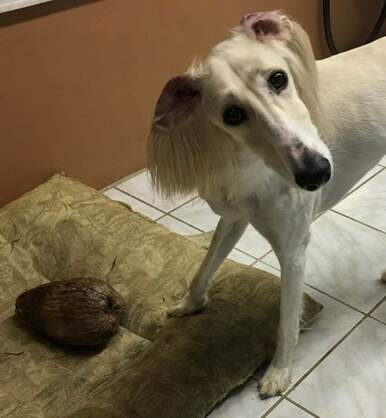
I drove my neighbor with his new dog to the vet's last week. It was like putting a Tasmanian devil on a leash and trying to take his temperature. Or clip his nails. Or look in his mouth. Or in his ears. In the end, they'd succeeded in muzzling him and covering themselves with scratches, and the dog had succeeded in plastering the room with feces and anal sac excitement. Fun times.
This week I took one of my own dogs. And I finally understood why the vet techs all say how much they love having them as patients. He snoozed on his pad in the waiting room. He stood calmly on the scale. He looked offended at the thermometer but stayed put. He sat calmly for a blood draw.
I'd like to say all my dogs are like this, but I confess some of them spend the time shaking and panting. They still cooperate. But they stress so much I sometimes fear they're unhealthier after a vet visit than they were before. Those are the ones I failed.
Because as much time as I spent socializing them to crowds and dogs and show halls and judges and umbrellas and kids and hats and wheelchairs and...well, you get it. I socialized them to everything they might come across on an ordinary good day. But their initial visits to the vet went like most little kids' initial visits to the doctor: despite everyone being nice, in the end those nice folks stuck a stick up their butt and a needle in their tenders. And no lollipop or dog treat made up for it.
Here's the thing: There is absolutely no situation more important for your dog to enjoy more than the vet clinic. It allows the veterinary team to perform all the examinations and procedures they need to do without being disrupted by a petrified or uncooperative dog. No panting, shaking, pulling or biting. No dread on your part about taking him. No exhaustion on his part about having been there. If you've ever taken a frightened heart patient to the vet, you know the feeling of wondering if the visit was worth the stress. So before you concentrate all your attention on learning to bait, or the perfect show stack, or how to sit front, you need to concentrate your training on learning to like the vet clinic.
Fortunately, the Fear-Free revolution in veterinary medicine has this same goal. It's to the veterinary clinic's benefit that your dog be cooperative during a visit. Founded by Marty Becker, DVM, Fear Free (whose motto is "Taking the pet out of petrified") educates and certifies veterinarians and other pet professionals---including groomers, boarding kennel operators, trainers and handlers---in ways to create less stressful, happier experiences for pets in their care. Fear-Free practices work with you and your dog to create a positive veterinary visit, laying the foundation for a lifetime of Fear-Free veterinary experiences.
You can search for a Fear-Free certified veterinarian or groomer near you at https://fearfreepets.com/resources/directory/. But even with more than 30,000 individual certified so far, you still may not find one in your area. Fortunately, much of the Fear-Free practices are ones you can do on your own. For example:
- Start with socialization---just as you normally would. You want your dog comfortable and controllable around strange people, dogs and even cats.
- Practice car rides and make sure your dog doesn't get car sick. You don't want him to associate the veterinary clinic and nausea. If need be, pre-medicate him with a motion sickness pill at least one hour before leaving. An additional pill given the night before can help even more.
- With a puppy, visit the clinic weekly just to greet the receptionists and maybe trot through an exam room. This may seem like an imposition to the staff, but if you call ahead and time your visits for their slowest times, and explain what you're doing, they will appreciate having a meet and greet. You may need to carry a young puppy, and do be sure to call ahead and make sure no dogs with communicable diseases have been there.
- Be sure to bring treats and even a favorite toy and just sit in the waiting room and play or practice some tricks. Of course, remember to be mindful that the real patients there may not feel well, so don't be too boisterous and be sure to give them lots of space. And of course, short leads only!
- At home, practice the sort of procedures your dog will regularly encounter at the vet visit. Tent his skin over the withers, touch his feet with clippers, lift his tail (maybe even take his temperature), look in his mouth and ears---all the while handing out treats like you're a broken slot machine.
- Teach your dog tricks. Performing tricks for treats helps calm many dogs as it gives them something to focus on and also specific directions of what they should do. Using treats, toys and play helps convince the dog they're in a fun place. Among those tricks, teach behaviors such as sit, stand, down, stay and shake, all of which may make an exam less of a battle.
- Bring a pad or bed from home. Even if your dog won't lie down it will provide a non-slip surface for him, and provide a bit of home.
- Know ahead what procedures the vet will likely be doing, and prepare accordingly. For example, if your dog needs a radiograph, it may be preferable to sedate him rather than have three techs dressed in lead wrestle him to the table.
- Steady the scale. The unstable surface upsets some dogs. Weigh a small dog in its carrier, or hold the scale as they step on it and release it only once they are secure. Better yet, train your dog at home on a wobble board so the scale is no big deal.
- Use persuasion rather than force. Lead your dog using a treat, not by dragging him.
- Use treats to distract the dog during procedures such as injections or temperature taking. Lickables such as peanut butter or squeeze cheese work best, but you will need to train the dog to stand calmly instead of attacking the dispenser or your hand!
- Ask if the exam can take place on the floor for large dogs, and in your pap for small dogs. If either needs to be on the table, place the pad or bed up there to stand or lie on. Make sure nothing can slip. Even a non-slip piece of rubber is helpful.
- Keep up a running conversation with the examiners. This will make most dogs feel more at ease. Unless it's an emergency, give the dog a chance to get used to them before the exam starts.
- Ask to stay with your dog as much as possible. Ask if instead of dropping your dog off in the morning for an afternoon surgery if you can wait in the parking lot, even if it's for hours, and be called when it's time. Many dogs form their most terrifying impressions of the veterinary clinic from the experiences surrounding surgery. Can you be there before or after the surgery? Having the owner present as the dog is sedated and waking up can greatly calm a dog.
But what if your dog is already fearful of the vet clinic? You can practice many of these same vet visits and home imitations. As much as you may be inclined to just suck it up and never go to the vet with your fearful dog unless he really has to go, it is far better to work with him and try to convince him that going to the vet is not the same as going to the gallows.
- If your dog is scared of the vet, no number of vet visits is going to convince him otherwise unless you can get him to calm down while he's there. As long as you leave while he's still just as frantic as he was when you arrived, unfortunately you haven't accomplished anything. So you need to go about desensitizing to the vet clinic as you would any other frightening situation.
- Depending on other medical issues, fast-acting anti-anxiety medications may help. CBD may also prove helpful. Ask the veterinarian beforehand if she sees any problem with this, and for a recommendation and prescription. Giving your dog anti-anxiety medication not only helps him get through the current appointment but acts as a training tool so that his memories of past vet visits are good.
- A thunder coat may help some dogs feel more secure. Many dogs find their slight squeeze comforting, and they can help calm a dog when at the vet.
- At first, just stand outside the clinic. Only when he's calm there should you go inside. Ask ahead and see if there is a more out of the way area you can practice in, only gradually moving to the waiting room and exam room.
- Bring your dog's favorite treats. And don't be stingy. Dole them out generously throughout the exam, not just at the end. Don't feed beforehand so your dog will be hungry for them.
- For actual visits, ask if your dog can wait in the car. The receptionist can call you on your cell phone when it's time to go in. And ask that you not be called into the exam room just to wait some more.
- Or, ask if your dog can be examined outside. Many Fear-Free practices have an enclosed patio area where they can combine safety while reducing stress.
- Don't be shy about saying stop. For years we've been taught to push on through when our dogs fight us---that if we give in we teach our dogs that resisting pays off. That's not good advice when it comes to a vet visit because the main thing it teaches him is learned helplessness---and the stress that comes with it. Telling him to man up relays to him that you, the one person he thought he could trust for his rescue, can't even help in this chamber of horrors. Unless it can't wait, just stop, reschedule the appointment to finish the procedure, and come sedated next time.
Some things are out of your control, but are standard in Fear-Free practices. These simple things could make your veterinarian's practice more fear-free:
- Provide nonslip surfaces throughout the waiting and exam areas, including hallways. That may mean setting up runners or using replaceable carpet squares.
- Play soothing music or have televisions on. It can distract nervous owners as well!
- Replace hospital odors with calming dog-calming pheromones, even sprayed on staff's smocks. Air out rooms to rid them of the scent of medic and scared-dog smells.
- Allow owners to stay with their dog as much as possible.

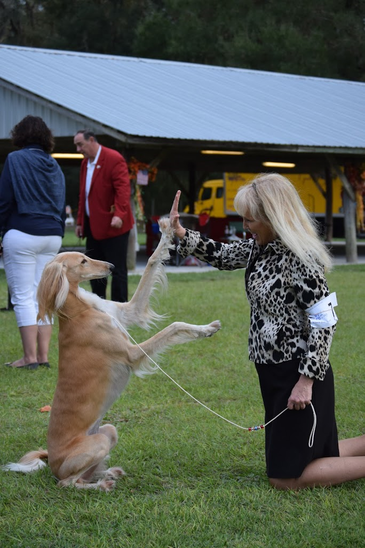
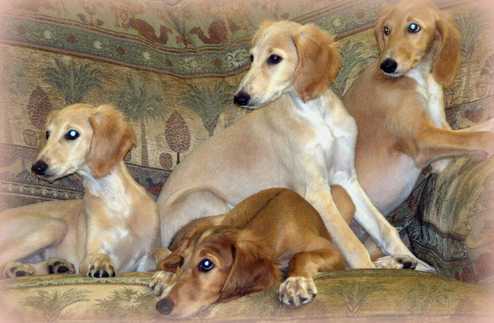
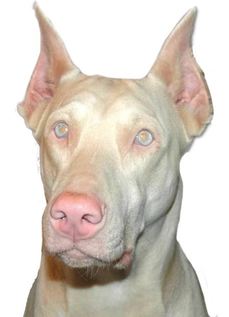
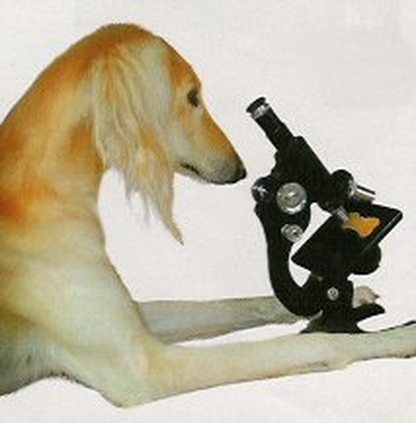
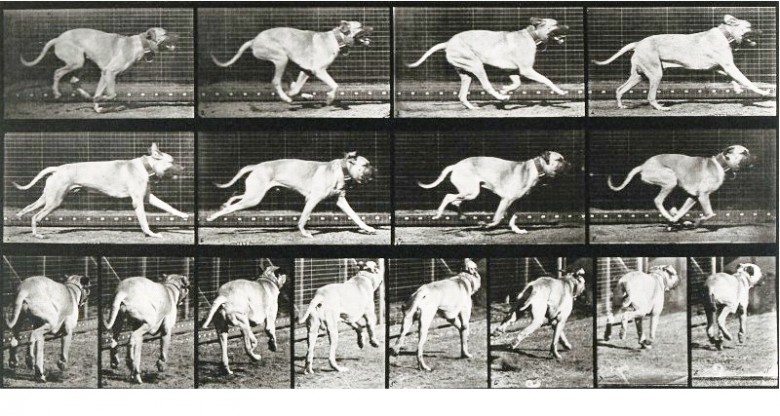

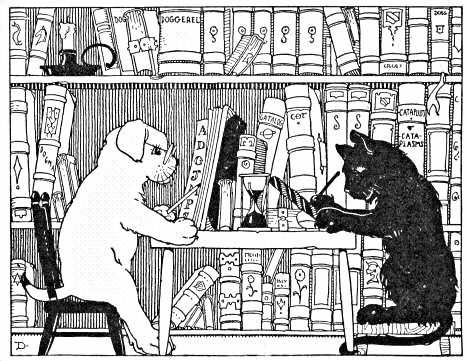
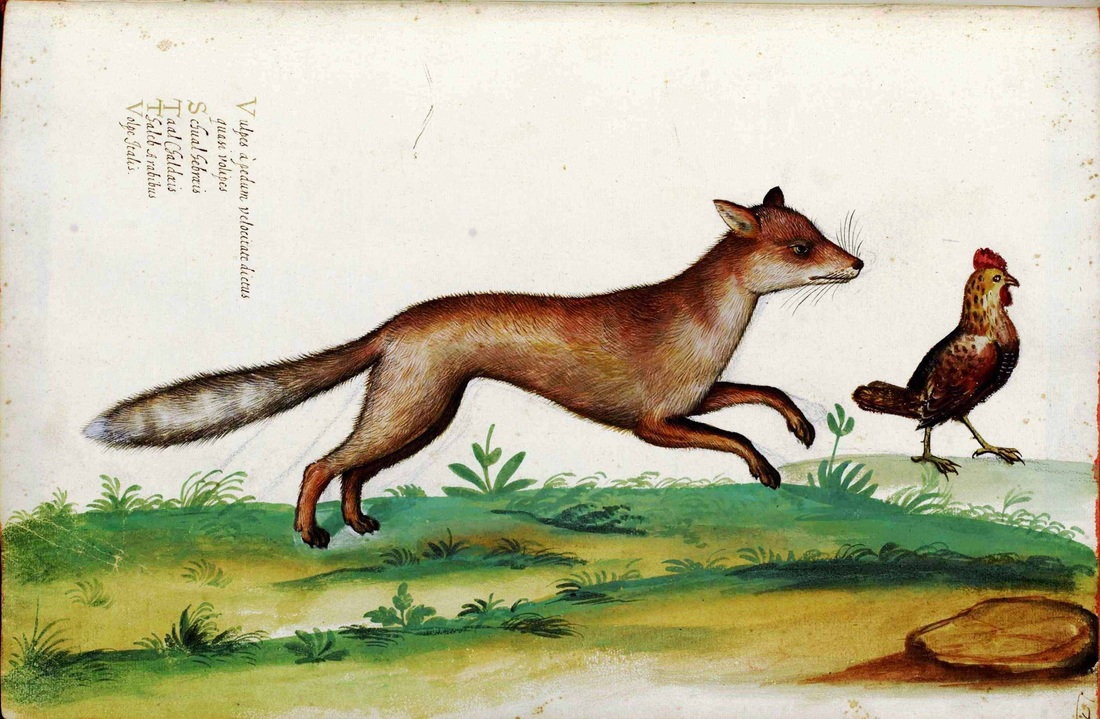
 RSS Feed
RSS Feed
